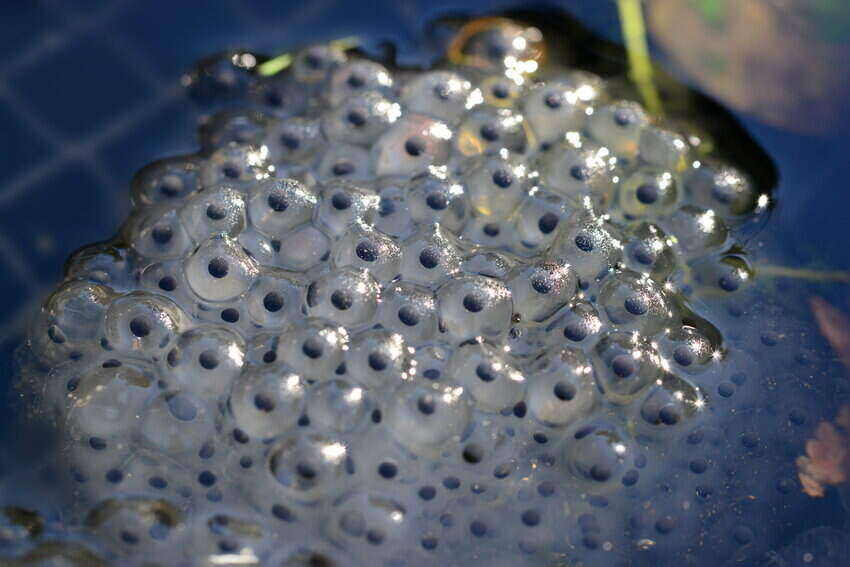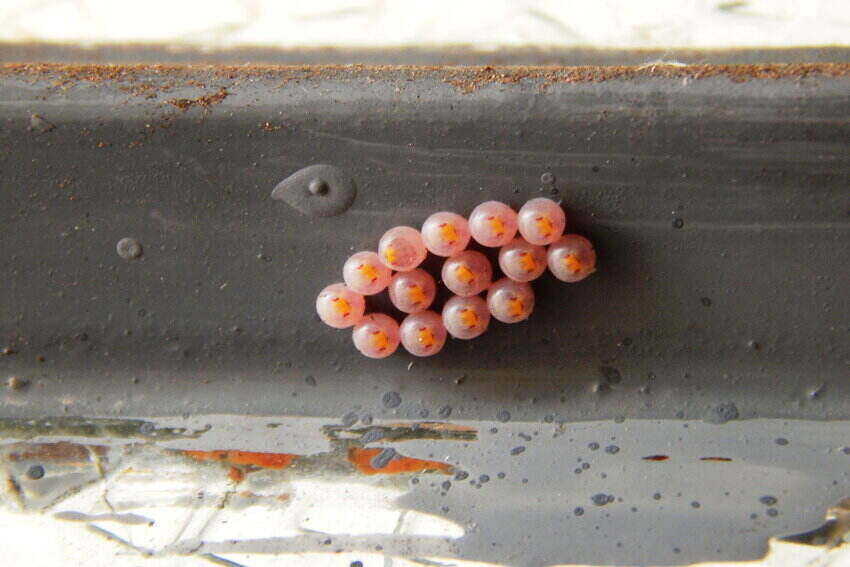Are you noticing clear jelly eggs in the garden? Lying in the top layer of your plant’s soil? Watching some slime trails in your garden? Then you are going to experience the worst nightmare of a gardener’s life.
These small clear balls, not the yellow or orange balls, are none other than slug eggs or snail eggs. These jelly balls might look like harmless pesky guys but they have the ability to destroy your whole garden. They will slowly consume all your foliage and create different size holes. Which eventually causes your plant to wilt or die.
But luckily you can fight back from this worst terrifying condition by using some easy remedies. So here we are with all the needed information about slug and snail eggs in the garden and their prevention.
Everything You Should Know about Clear Jelly Eggs in Garden

What Are Clear Jelly Eggs in Gardens?
The clear jelly balls you have seen in your garden are slug eggs. Slugs are basically snails without shells. And once they hatch from that egg they will be eating all the pretty plants you have grown in years.
Slugs typically lay five hundred or more eggs a season. You can see why your slug problem can quickly become out of control.
How Long Does It Take for Slug Eggs to Hatch?
Hatching mostly depends on environmental and weather conditions. They only take one month to hatch and begin to feed on the plant’s stems and leaves immediately (sometimes leaving the leaves red or yellow).
They also feed on leaves, flowers, fruit, and vegetables. And just in three to five months, they reach adulthood which can be worse for your plants. So for the sake of your plant life, it is important to remove all those slimy balls as soon as possible.
What Do Slug or Snail Eggs Look Like?
Now you may ask how to identify these deadly eggs. As you are reading this article, you have already seen one form of slug eggs, the transparent one. But they can also look like a grayish-brown, white, yellowish, or pearl-colored slimy bundle.
However color may keep changing to darker as the slug baby grows inside. But in all stages, the eggs will be covered by a slimy substance that is slightly gummy.
As slugs lay eggs in a bunch, you will see gelatine balls clumped together. These eggs are generally round or rectangular in shape, but you won’t see any uniform shape in all the eggs. But not all small round clear insect eggs are slug or snail eggs.
Where to Find Slug Eggs?
Finding slug eggs might be tricky as they hide under the leaf litter or other organic debris of the top layer of plant soil. So the best place to find them is to search under the debris you have in your garden or potplant.
You can also find them near logs, rocks, or slack vegetation as slugs lay eggs in the hide. Sometimes slugs may lay eggs on lawn clusters or low-dangling greeneries.
Because of this hiding and miniature size, you may not find these eggs at first glance. For that, using a flashlight can be a great tool for searching for eggs at the night. And don’t forget to search under leaves.
Plus, slugs lay eggs in the environment that suits their needs best. For that, wet, damp soil is also another possible place to search for slug eggs as they live and lay eggs in wet, damp areas. This wet damp area helps to keep the mollusk hydrated.
This need for hydration can sometimes be lucky for you to find and remove slug eggs from the soil in the morning or evening when the sun is down. Slugs generally activate when there’s not much heat and evaporation.
Another thing that you should keep note of is that slugs love to eat the foliage of plants with high nutrients. So, you may find the slug eggs near lettuce, cauliflower, cabbage, and marigolds.
How to Remove Slug Eggs from The Soil/Garden?
By far, you may have already understood that slugs or slug eggs are the worst pests to have in a garden. So as soon as you find the jelly larvae or egg clumps on your plant you should remove them with immediate effect.
Have you wondered, what to do with garden snail eggs? In fact, slug eggs can be removed by using various methods. Here we will discuss several important ways.
1. Soapy Or Salty Water
The very first and easiest way to remove these slime balls from your garden is to pour some soapy or salty water into the identified slug larvae. This soapy or salty water will work as a natural poison for those slug eggs and they will die soon.
Or you can also dig the eggs out of the soil and soak them in soapy or salty water. For removing the slug eggs from the soil, you can use latex gloves and tweezers. Even, you can easily break the eggs using tweezers.
2. Bleach Mixed Water
In case you want a fast working process to solve the jelly problems, go for bleached mixed water. This works as a poison for the slug eggs too but in a faster way.
But in this case, you have to screen out the slug eggs from the soil first. This solution shouldn’t be used in the soil as it can harm the fertility of the soil like some types of green fertilizer balls does.
3. Use Any Sharp Tool
If you feel using soapy or bleachy water is not your kinda work, then use any gardening folk or gardening spade to churn or plow the soil (be aware of the mixing up of the gardening soil with pot soil). As the slug eggs have a very soft and fragile structure, they will easily die if you break them. You can also use your garden boots to crush them.
4. Bring Slug Eating Animal
If you have chicken at home, you already have the solution at your home. Chickens or ducks happily dine in slug eggs and leave no trace. So, if you have one, leave them in your garden and the garden will be threat free.
Another such predator animal that eats slug or snail eggs is fish. If there are fish in your house, then collect those slug eggs and toss them in the fish pond.

Tips to Prevent Slug Infestations in Gardens
Although you have removed the current slug eggs from the garden, it doesn’t mean slugs won’t come back to lay eggs. So, how to get rid of slug eggs? For that, you must take some precautions to prevent slugs from laying eggs.
1. Monitor and Control
The first step in slug prevention is to monitor and control them. For that, dig a few holes approximately 6 inches deep and 4 inches wide. Then cover those holes with a thin board for creating traps. This will help to prevent slugs from laying eggs on the plant soil.
2. Keep The Garden Clean
Snails love to live in moist conditions and avoid bright areas. So keep cleaning your garden and home every frequent break. First, rake up the piles of organic matter, pick up all the woods from the ground, and every other material that will provide shelter to these slimy animals.
3. Place Baking Yeast in Water
Another good idea to prevent slugs is to place plates with water mixed with baking yeast throughout your garden. This also acts as a natural deterrent or poison for the slugs to turn their way outside the garden.
4. Pick Them out
Just like the slug eggs, you can also handpick the slugs out of your garden. As said before, slugs stay active during the morning and evening, so you can do a little search for slugs during that time in your garden. As the animals are hefty to pick up so use a trowel or even chopsticks.
And if those sleeky creatures don’t come out, leave some fruit rinds or vegetable pieces to bribe them. Pick them out when they are happily dining and drop them into soapy or salty water.
5. Place Sharp Surface
Sharp doesn’t mean using broken glasses or `steel. Rather place copper tape, eggshells, diatomaceous earth, and pencil sharpenings in the garden to prevent slugs from laying eggs. Don’t worry, these are sharp enough to break the laid eggs.
Sometimes your garden might be swamped by slugs. In this case, chicken mightn’t give you the perfect solution, but applying diatomaceous earth will work here greatly. They are very affordable for gardeners.
The sharp and rough diatomaceous earth cuts the eggs thus you will get a quick solution to the slug or snail eggs problem. It can also absorb moisture and kill the slug babies inside the eggs.
On a side note, slugs can be used in compost too.
Final Words on Removing Jelly Eggs from Gardens
So in the end, we would like to never compromise with clear jelly eggs in the garden as they will destroy all your lovely plants. Whenever you find this egg slime in your garden go for the soapy, salty, or bleached water to kill them thoroughly.
And also keep a sharp eye on your plants, as slugs can come back anytime. But if you follow the prevention tips this problem may also be solved easily. So get ready with your torch and garden boot to search for the slug eggs in the garden and get rid of them!

I’m Shofi, a passionate gardener and blogger. I have 10+ years of experience in gardening and hold certifications in horticulture and garden design. I share my knowledge and skills through my garden blog to inspire and educate others on the joys of gardening. I try to provide valuable information and create a community for gardeners of all levels to connect and learn. My ultimate goal is to inspire others to start their own gardens and connect with nature.
